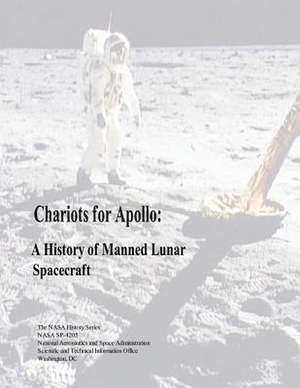Chariots for Apollo
Autor National Aeronautics and Administration, Courtney G. Brooks, James M. Grimwooden Limba Engleză Paperback
Preț: 197.12 lei
Nou
Puncte Express: 296
Preț estimativ în valută:
37.72€ • 39.38$ • 31.15£
37.72€ • 39.38$ • 31.15£
Carte disponibilă
Livrare economică 25 martie-08 aprilie
Preluare comenzi: 021 569.72.76
Specificații
ISBN-13: 9781493625291
ISBN-10: 1493625292
Pagini: 526
Dimensiuni: 216 x 279 x 27 mm
Greutate: 1.21 kg
Editura: CREATESPACE
ISBN-10: 1493625292
Pagini: 526
Dimensiuni: 216 x 279 x 27 mm
Greutate: 1.21 kg
Editura: CREATESPACE
